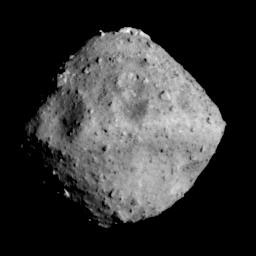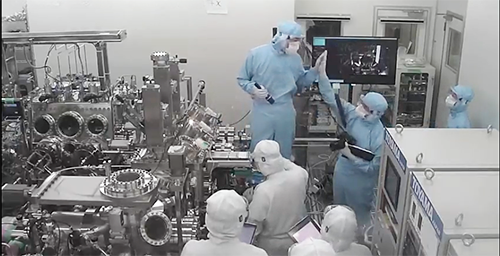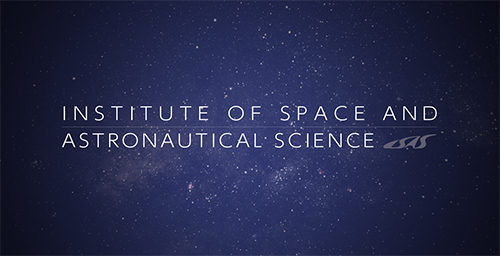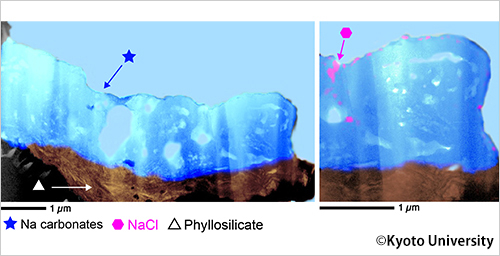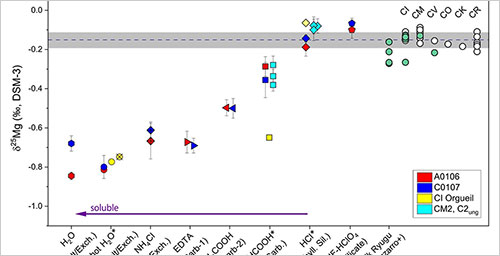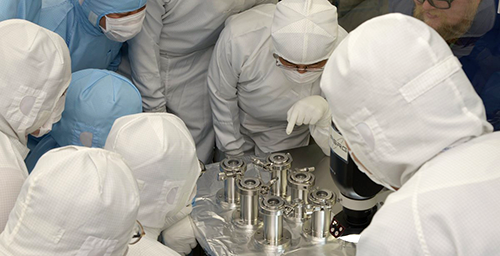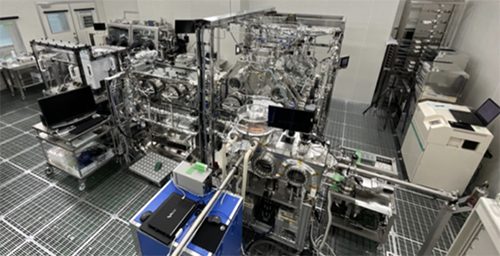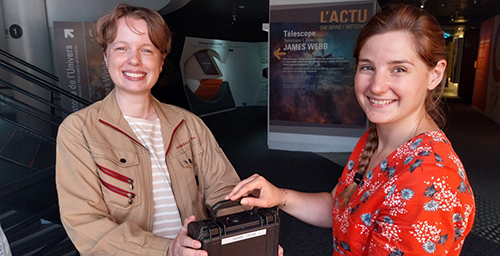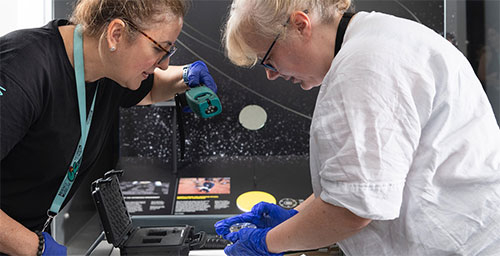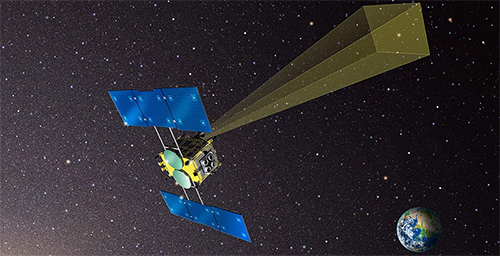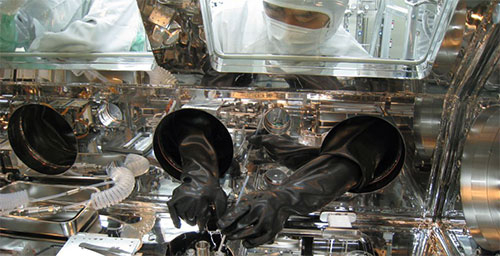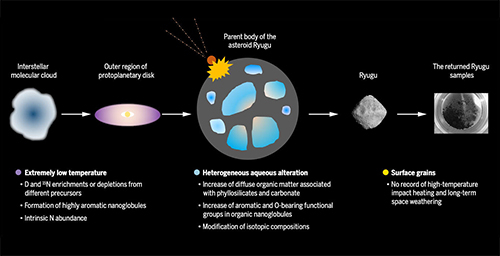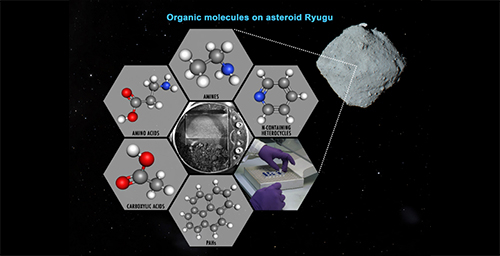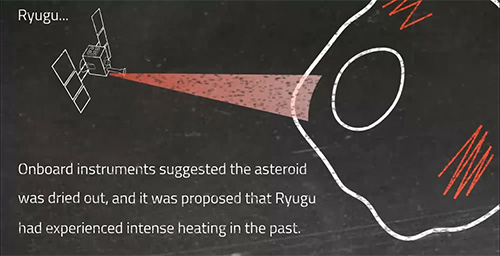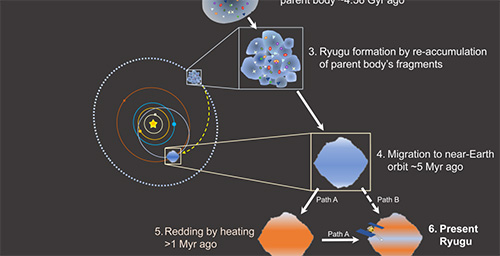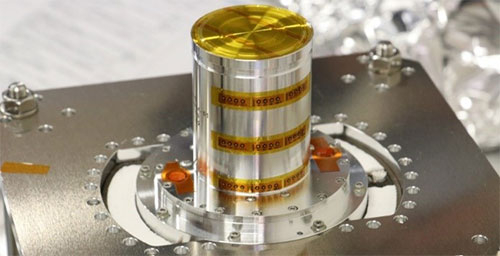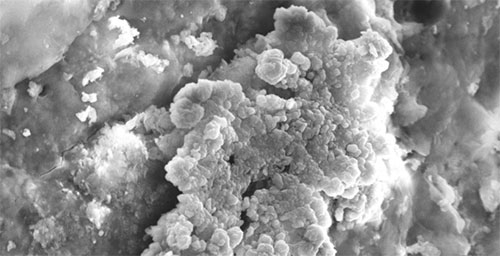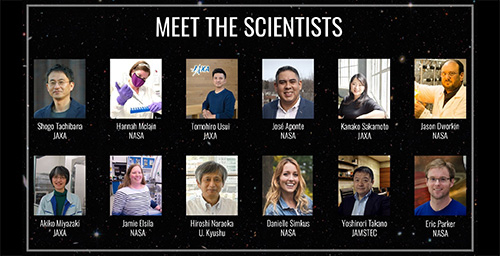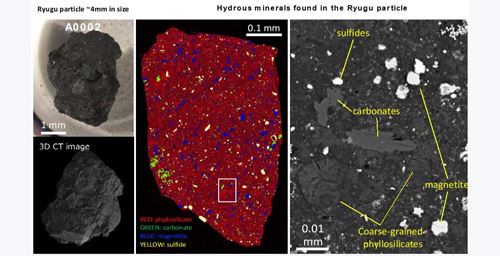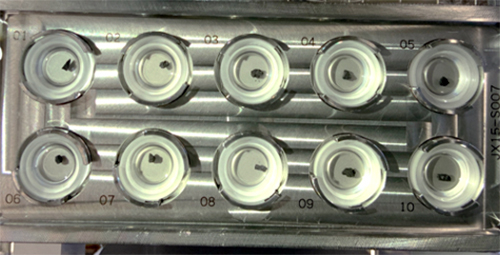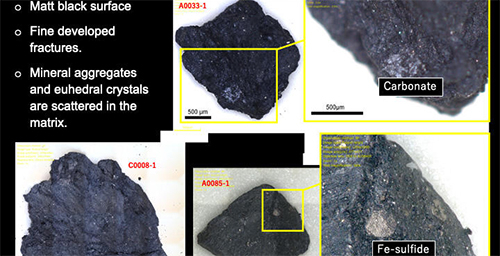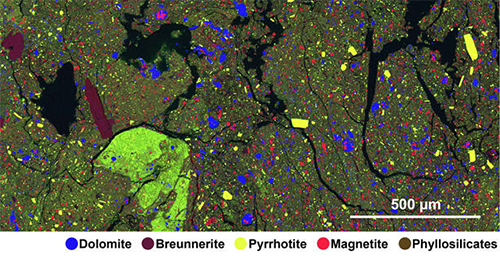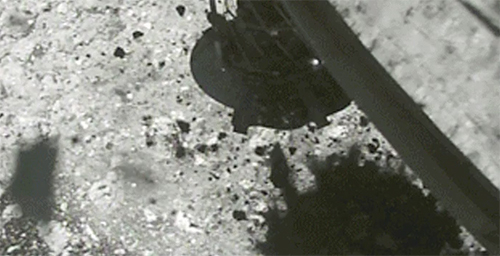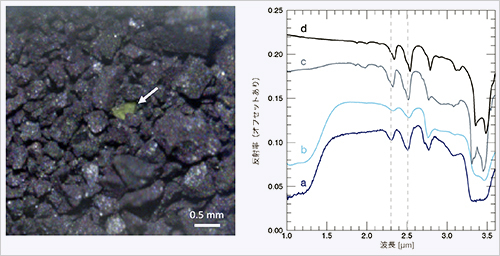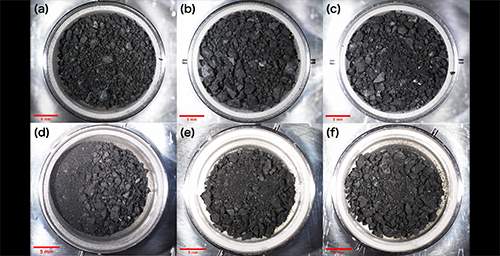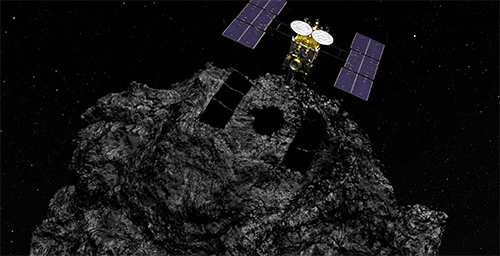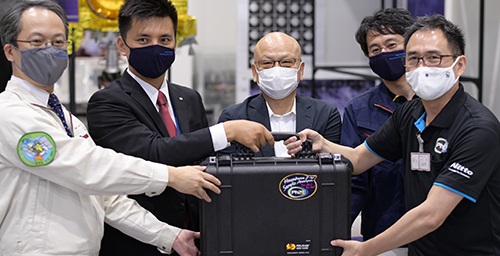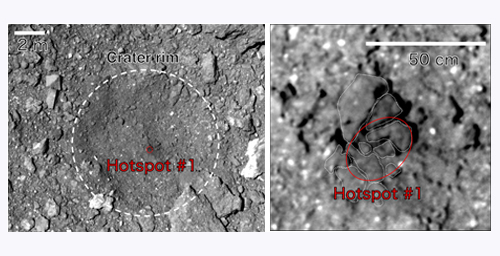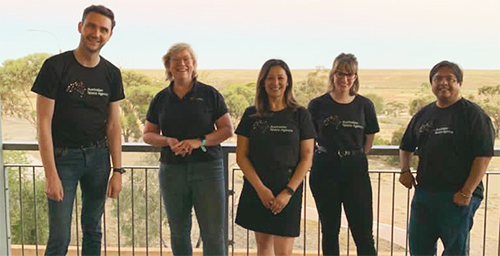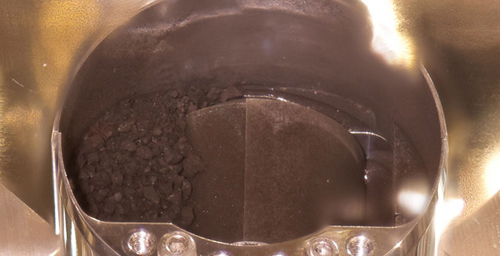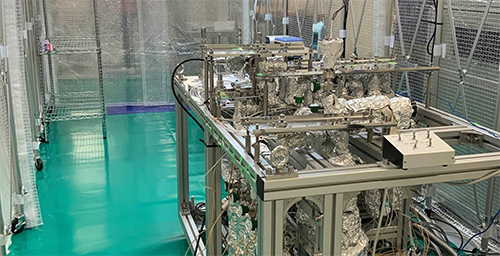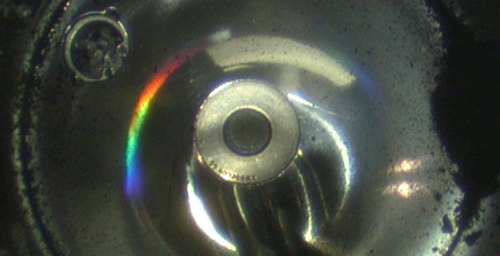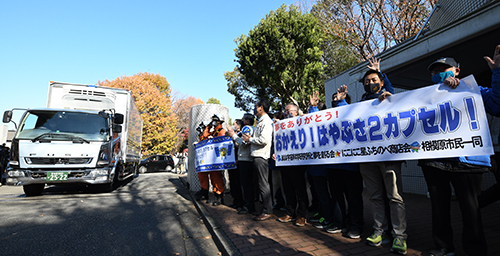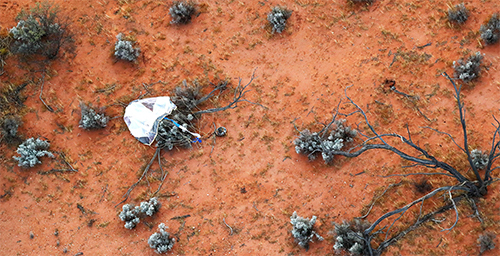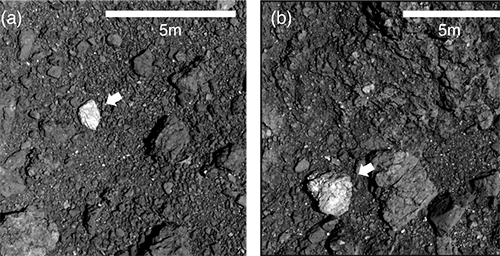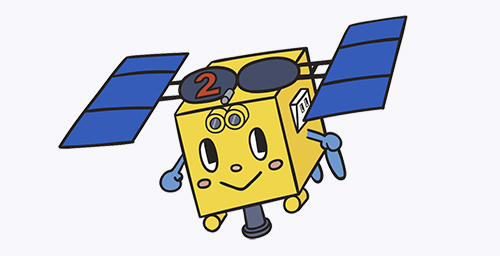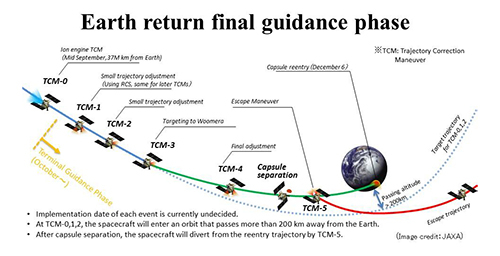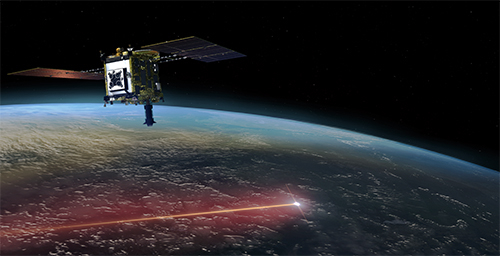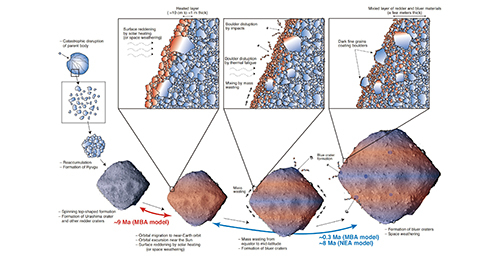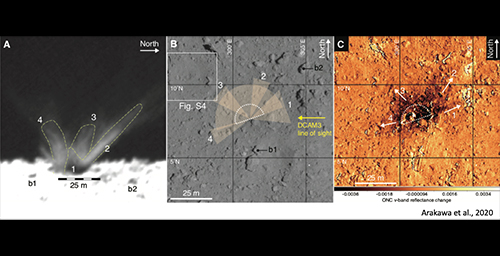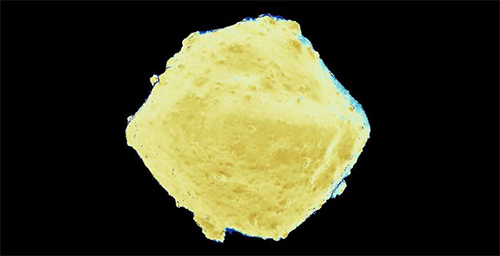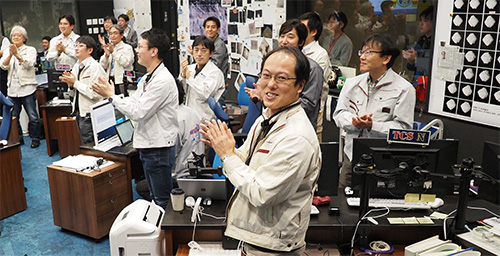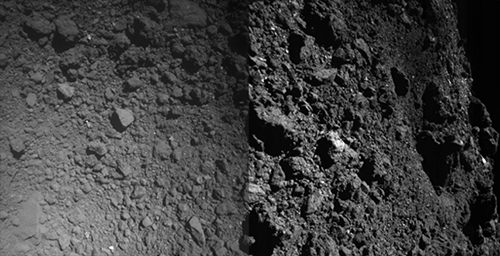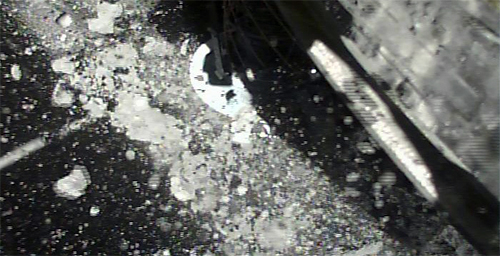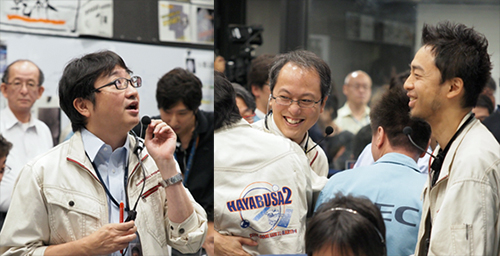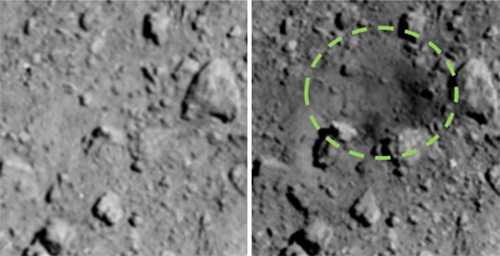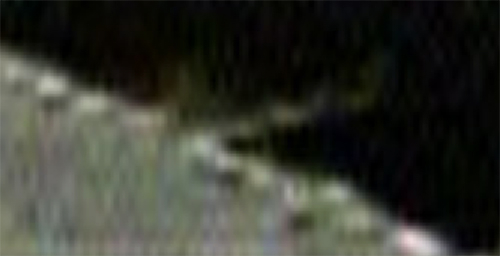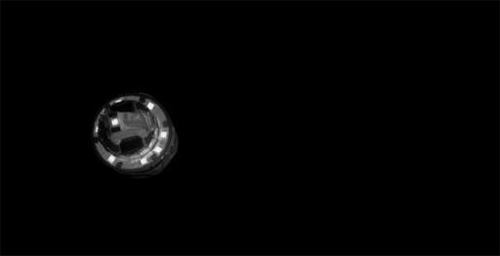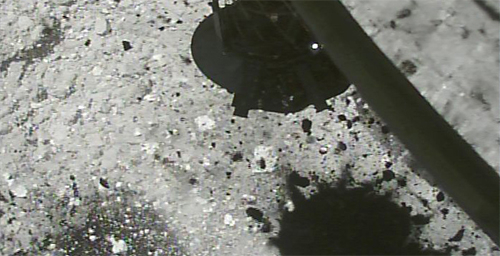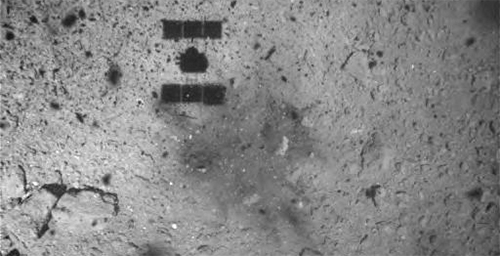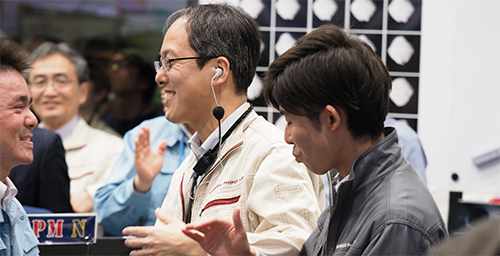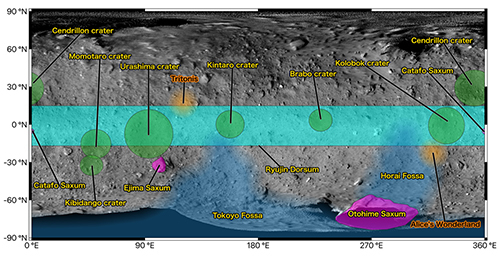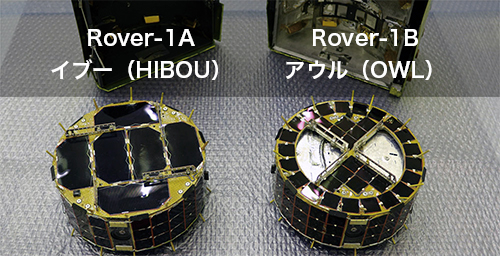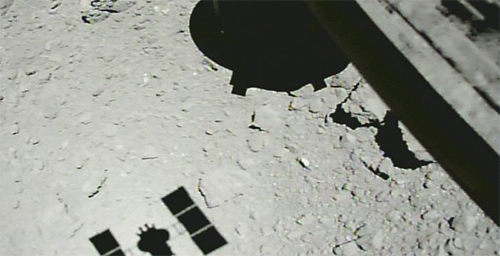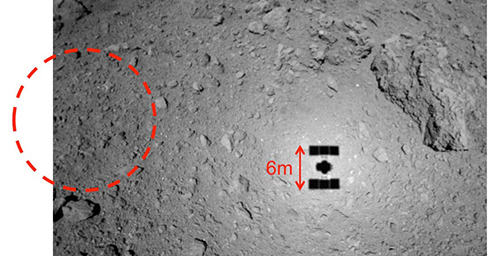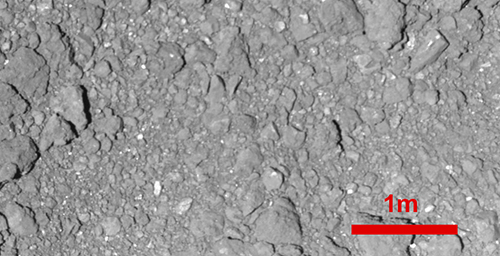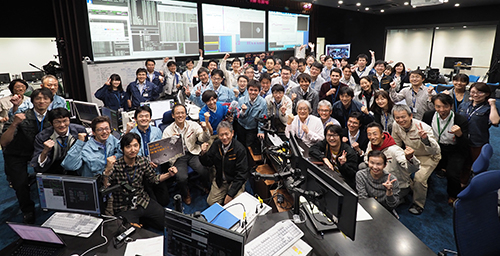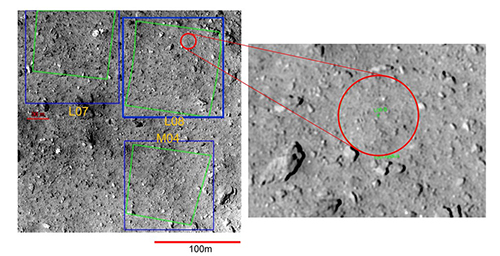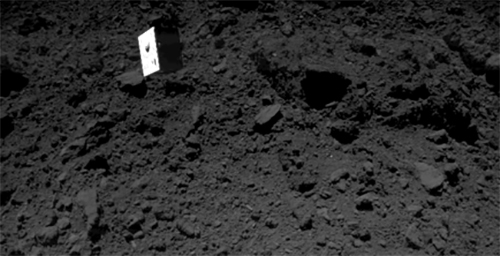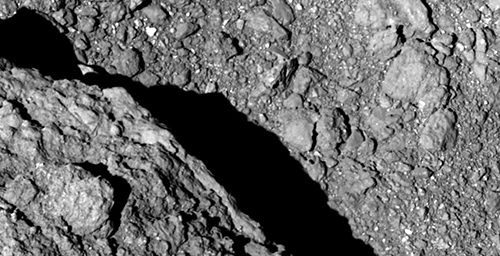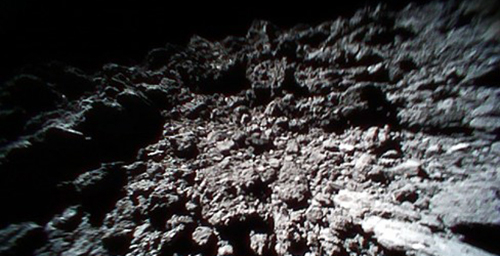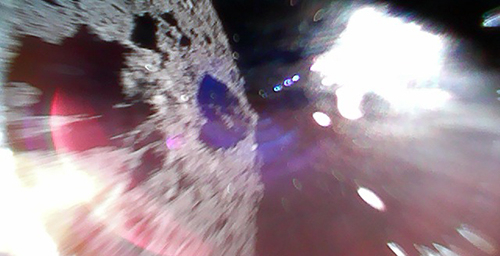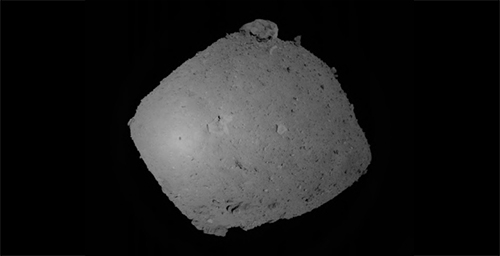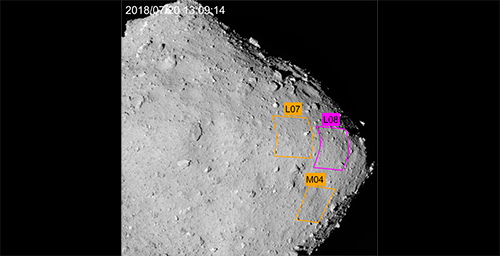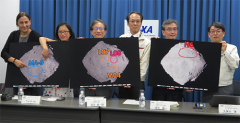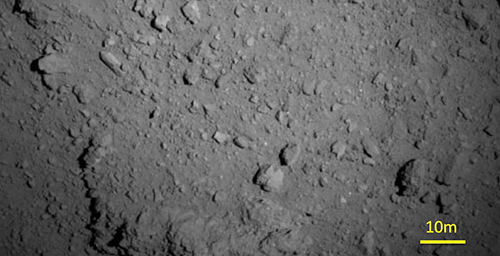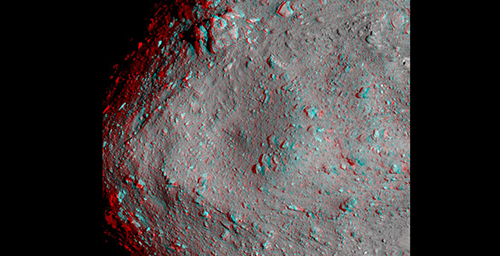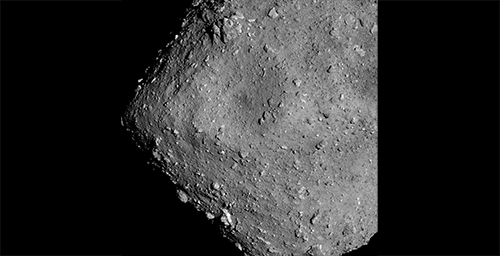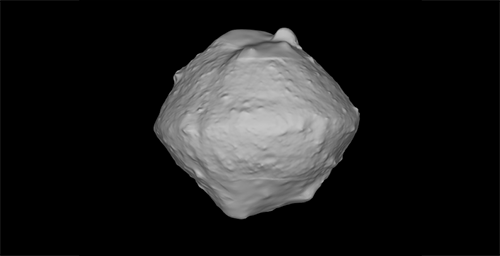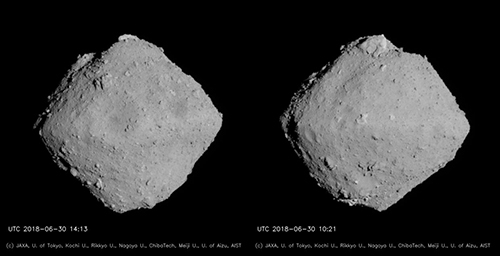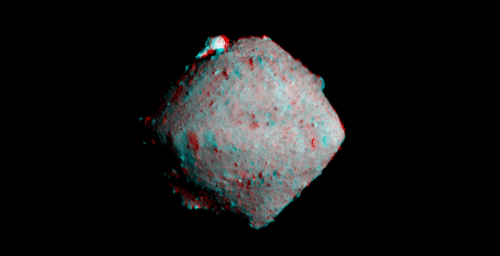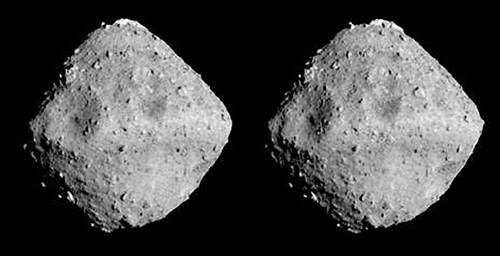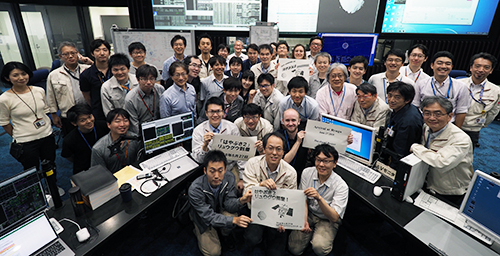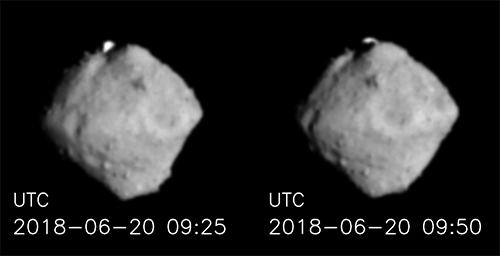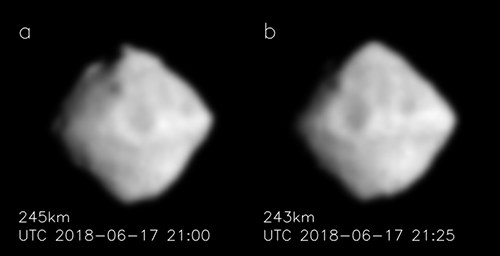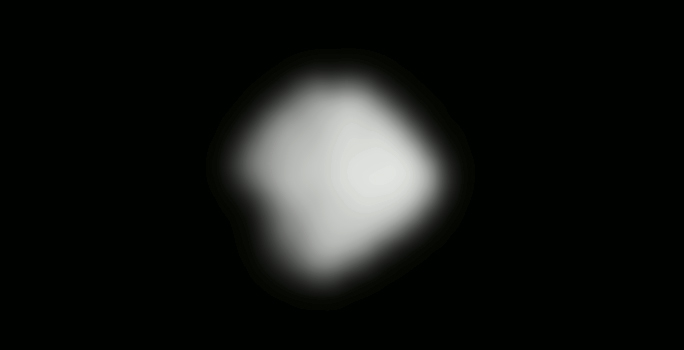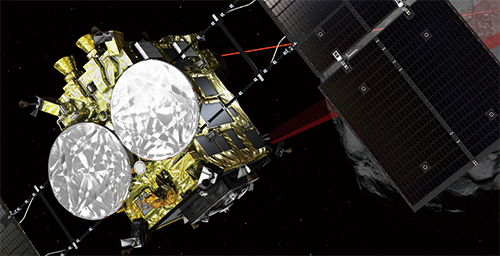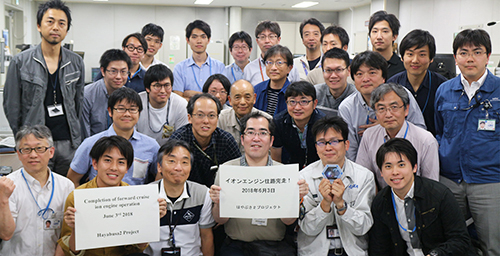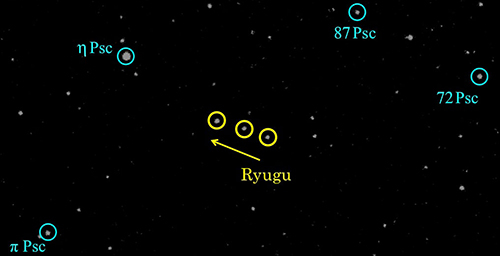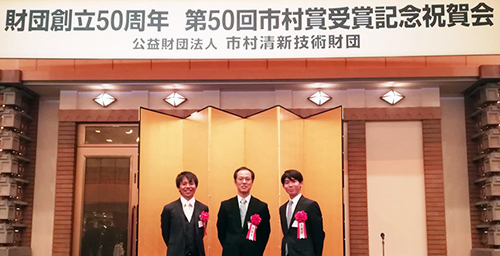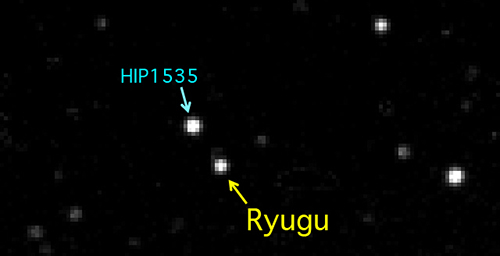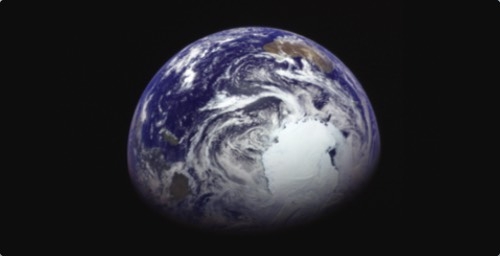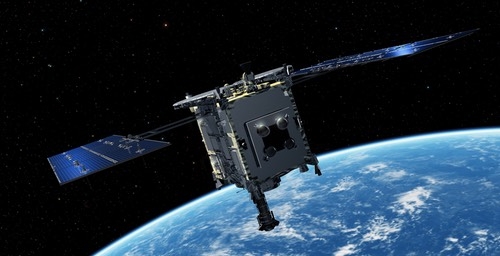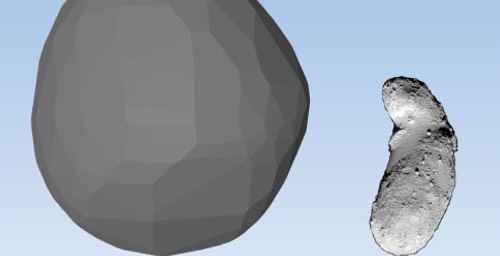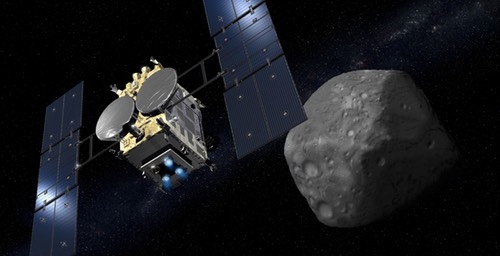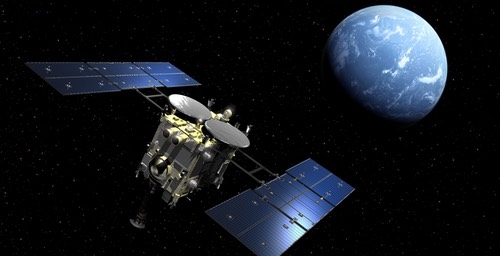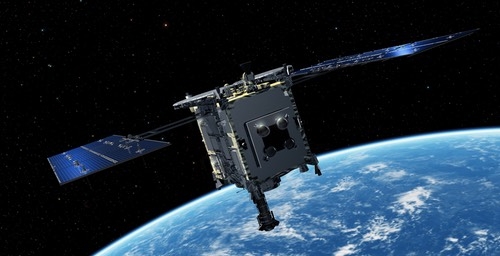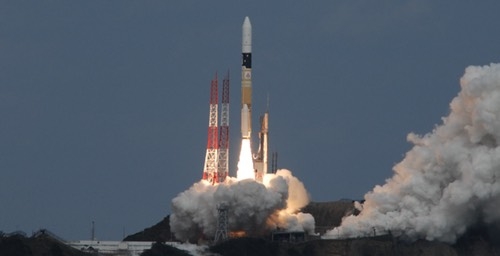Hayabusa2 is close to arriving at asteroid Ryugu. After a journey of around 3.2 billion km since launch, our destination is finally near. Two small objects will soon meet in outer space 280 million km from the Earth.
Figure 1 shows Ryugu photographed by the ONC-W1 (Optical Navigation Camera - Wide angle) on June 24, at about 15:00 JST. We can see Ryugu floating in the jet black of space.
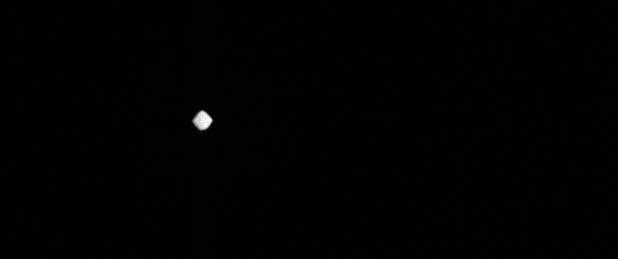
Figure 1: Asteroid Ryugu images by the ONC-W1. Photograph was taken on June 24, 2018 at around 15:00 JST and shows a section of the camera's wide field of view.
Credit * : JAXA, University of Tokyo, Kochi University, Rikkyo University, Nagoya University, Chiba Institute of Technology, Meiji University, Aizu University, AIST
Figure 2 shows Ryugu photographed with the ONC-T (Optical Navigation Camera - Telescopic) on June 24, at around 00:01 JST. The appearance of the surface has now become much clearer. The distance between the spacecraft and the asteroid when this photo was taken was about 40 km.
[Original size, 256x256 pixels]
Figure 2: Asteroid Ryugu photographed by the ONC-T on June 24, 2018 at around 00:01 JST.
Credit * : JAXA, University of Tokyo, Kochi University, Rikkyo University, Nagoya University, Chiba Institute of Technology, Meiji University, Aizu University, AIST
Comment by Project Manager, Yuichi Tsuda.
The shape of Ryugu is now revealed. From a distance, Ryugu initially appeared round, then gradually turned into a square before becoming a beautiful shape similar to fluorite [known as the 'firefly stone' in Japanese]. Now, craters are visible, rocks are visible and the geographical features are seen to vary from place to place. This form of Ryugu is scientifically surprising and also poses a few engineering challenges.
First of all, the rotation axis of the asteroid is perpendicular to the orbit. This fact increases the degrees of freedom for landing and the rover decent operations. On the other hand, there is a peak in the vicinity of the equator and a number of large craters, which makes the selection of the landing points both interesting and difficult. Globally, the asteroid also has a shape like fluorite (or maybe an abacus bead?). This means we expect the direction of the gravitational force on the wide areas of the asteroid surface to not point directly down. We therefore need a detailed investigation of these properties to formulate our future operation plans.
The Project Team is fascinated by the appearance of Ryugu and morale is rising at the prospect of this challenge. Together with all of you, we have become the first eyewitnesses to see asteroid Ryugu. I feel this amazing honor as we proceed with the mission operations.
* If you wish to use the images here, please include the displayed credit. In the case where an abbreviated form is necessary, please use "JAXA, University of Tokyo & collaborators".

